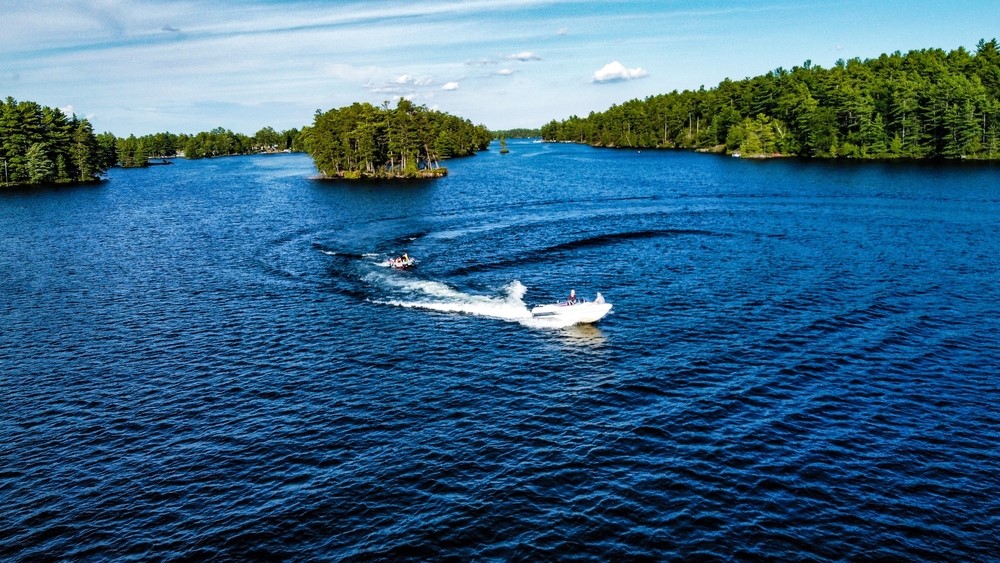Basic Safety for Ontario Boaters

Safety first is always the best rule for Ontario boaters. Basic boating safety means following Ontario’s boating regulations, having the right boating equipment, and knowing the weather.
The best way to avoid boating-related fatalities and accidents is to make safety your top priority on Ontario’s waterways.
Western Financial Group, a 100% Canadian company, can help you navigate your Ontario boat, car, home, and business insurance during this period of economic uncertainty.
What is basic boating safety?
What you need to know about lifejackets
Joshua's Law, also known as Lifejackets for Life, went into effect in April 2024 for Ontario boaters. It requires children 12 years of age and younger to wear a lifejacket or PFD while on a pleasure boat that is underway or while being towed behind a pleasure boat using recreational water equipment.
In Ontario, there are an estimated 30 recreational boating fatalities per year. Alcohol consumption is the cause of roughly 40% of all recreational boating deaths in Ontario.
Each year, Canada averages 111 recreational boating deaths. Not using a lifejacket, also called a personal flotation device (PFD), is a leading cause of death among recreational boaters, making up 89% of all fatalities.
A lifejacket must fit the person who’s wearing it. A life jacket that is too big can slip off or ride up, potentially obscuring your face and causing you to drown. A life jacket that is too small will not provide enough buoyancy and might fail to keep you afloat.
A child’s lifejacket needs to fit properly because a snug fit helps make sure the lifejacket won't slip off.
Every Canadian watercraft must have a lifejacket for each person on board, it must be readily accessible, and in good condition. It is not mandatory, though, to wear them while on a boat.
Speeding can be dangerous
The faster your boat speeds, the greater the distance required for it to stop.
Following boating speed limits in Ontario help keep boaters, swimmers, water sports enthusiasts, and marine life safe. Speed limits can vary depending on the location and type of waterway.
Within 30 metres (100 feet) of shorelines, the speed limit is usually 10 km/h unless otherwise posted. This rule helps protect Ontario’s swimmers, small watercraft, marine life, and the shoreline.
Did you know? Alcohol consumption while boating is more dangerous than many people realize because it intensifies the effect of fatigue, sun, wind, and boat motion to negatively affect balance, judgment, and reaction time.
Your Ontario boat’s equipment
Or Is your boat’s safety equipment up to date?
Make sure to inspect and replace if necessary:
- Flares and fire extinguishers
- Life jackets that are damaged or ill-fitting
- First-aid kits that are outdated or missing items
- Air horns or whistles
Did you know? Transport Canada requires specific safety equipment based on the size and type of boat.
In Ontario, don’t boat under the influence of alcohol or drugs
Under the Criminal Code of Canada, consuming or having open alcohol containers on private boats is illegal, unless specific conditions are met.
Ontario boat passengers may legally consume alcohol within accepted limits only if the boat:
- Has permanent cooking facilities
- Has a permanent sleeping area
- Has a permanent toilet (a portable toilet does not count)
- Boat is moored to the dock, anchored, or beached, and is not motion
Under the Criminal Code of Canada, it is an offence to operate a boat if you are impaired by alcohol or drugs and that includes cannabis.
Who enforces boating regulations in Ontario?
In Ontario, boating regulations are enforced by the Royal Canadian Mounted Police (RCMP), provincial and municipal police forces, and other local authorities.
These authorities have the power to inspect boats, monitor activities, and issue fines for violations of boating laws and safety regulations.
Do you have basic boating skills as an Ontario boater?
Basic safety measures
- Passenger overboard: Reduce speed and toss the passenger overboard a lifejacket or PFD.
- Potential collision: Slow down and yield the right-of-way to other boat.
- File a float plan with a marina, family member or friend as a way for authorities to locate you if needed.
- Know the basics: Know how to steer your boat, how to launch and dock your boat, throw an anchor, and put your boat on its trailer.
- Know basic nautical terms for safety and communication with other boaters.
- Learn how to tie basic knots, such as a bowline, square knot, and figure-eight knot, to know how to tie your boat up at a dock or to secure equipment.
- Get some basic first-aid skills.
- Be aware of the weather and head to shore if the weather is turning for the worse.
- Boating with a buddy is safer than boating alone.
Do you have Ontario boat insurance?
If your Ontario boat is financed, your lender may require boat insurance. Marinas can require boat insurance with $3 million in liability coverage.
Ontario boat insurance protects you and your loved ones, even though it is not mandatory in Canada. It protects your boat and its motor, boating equipment, and boating accessories like lifejackets, GPS, depth sounders, and many other items. Ontario boat insurance protects you and your investment in your boat financially.
In conclusion
As fun as it is to be boating on Ontario’s beautiful waterways, accidents can happen. When you practice safe boating, you are protecting yourself and other boaters.



